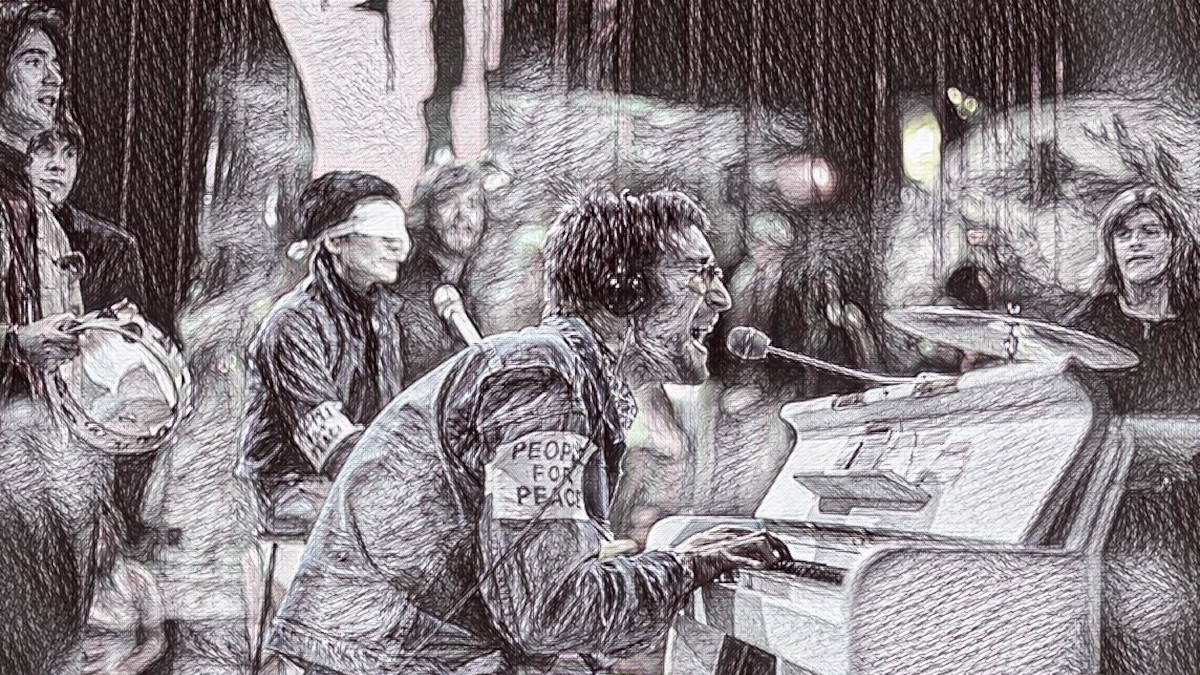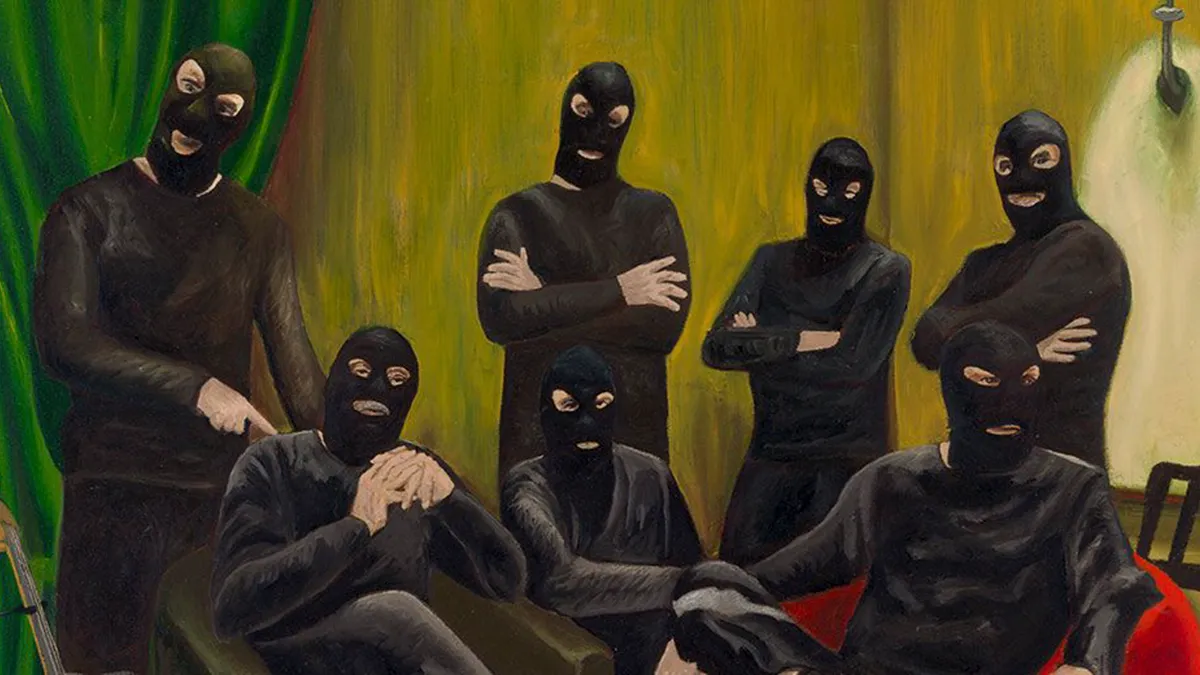Many years ago, I finally managed to get a copy of the Stooges’ final album, Raw Power. I rushed home and eagerly whacked it on the turntable.
But, with the opening bars of Search and Destroy, my anticipation turned to disappointment. I trudged back to the record store: “I think there’s something wrong with this pressing: there’s hardly any sound in the left channel”
“Nah, man: that’s just how Bowie mixed it. He was probably off his face.”
And that’s the way I heard the proto-punk classic for decades: a muted rhythm section punctuated by searing blasts of squalling lead guitar from the right speaker.
Until the late 90s, when Iggy Pop personally remixed the album for CD reissue. Certainly, the new mix was more balanced and brought hitherto unnoticed instruments (xylophone!) forward, but still a few fans raised their eyebrows at the cleaning-up of a raw rock classic.
Similar questions are being asked about a new reissue of John Lennon’s 1970 classic, John Lennon/Plastic Ono Band.
Plastic Ono Band was Lennon’s first “real” post-Beatles album (even today, hardly even hardcore collectors bother with “avant-garde” stuff like Two Virgins). Free to do his own thing, Lennon used the album as a kind of exorcism of his personal demons: everything from the death of his mother (Mother), to “Primal Scream” therapy (Well, Well, Well) to shaking loose from the Beatles (God, with its stark statement: “I don’t believe in Beatles”).
The album is a raw, dark exploration of the self. The production was suitably atmospheric and subdued.
Just as the Stooges’ Fun House was eventually released as a set of “Complete Sessions”, Plastic Ono Band has been re-issed as an “Ultimate Collection”, comprising six CDs, two Blu-rays and an 132-page book.
It also includes an “Ultimate Mix”. Such re-mixes have become more common in recent years. Engineers and producers tinker with original master tapes, supposedly with the aim of “improving” the original album mix.
But what they mean by “improving”, though, can be a matter of some contention. Most often, “improving” means, “making it sound good on headphones”.
Changing technology can have a profound effect on how people listen to music.
In the 1950s and 60s, popular music was most often listened to on portable radios and cheap, portable record players. Then, in the 1970s, as the Baby Boomer generation got jobs and disposable income, high-end stereo systems became standard: consequently, the dynamic range of contemporary music mixes became much wider (put simply: the difference between the quietest and loudest sounds on the record became more pronounced).
The rise of headphones, first with the Walkman and then the iPod, changed all that. The need to make music sound good on cheap headphones lead to the “Loudness Wars”: dynamic range was dramatically compressed (the quiet sounds were boosted, basically, making the whole mix “louder”), sending VU meters charging into the red. Then, the arrival of higher-quality headphones like Beats by Dr. Dre pushed heavy bass to the fore.
What does that mean for Plastic Ono Band? To a millennial with a pair of Beats, the original album production seems thin. Consequently, the bass and drums have been pushed up in the mix.
But the new mix also promotes Lennon’s singing, to “increase the clarity of John’s vocals”.
Which raises the question: at what point is all this remixing distorting the artist’s vision?
John Lennon famously disliked the sound of his own voice and frequently used studio techniques to change and mask it. Beatles producer George Martin remarked that Lennon constantly fiddled with effects to hide his distinctive Liverpudlian twang.
The “Ultimate Mix” of Plastic Ono Band strips away much of the studio fog from Lennon’s vocals. Undoubtedly, it will sound better to modern ears – but is it what Lennon would have wanted?
Douglas Adams’s Life, the Universe and Everything, relates the story of a poet who lived in the forests and wrote, on dried leaves, poems that were “unspeakably wonderful”. But, after the invention of time travel, executives from a correcting fluid company approach the poet with the suggestion that he make the odd deliberate mistake in his poems, then return them to their original state with their brand of correcting fluid.
As Adams writes, “Many people now say that the poems are suddenly worthless. Others argue that they are exactly the same as they always were, so what’s changed? The first people say that that isn’t the point. They aren’t quite sure what the point is, but they are quite sure that that isn’t it.”
The same might be said of the John Lennon/Plastic Ono Band “Ultimate Mix”. The music is kinda-sorta the same, but the mix has changed. Maybe it “sounds better”, but is that the point? Are the original “flaws” part of what made the album what it was?
In a similar vein, do “complete collections” add or devalue a work? When artist Clifton Pugh died, his will specified that a great many incomplete works and sketches were to be destroyed. Pugh felt that his finished work was what he wanted to see and that, while working sketches would surely become valuable after his death, they would also dilute his corpus.
When the “Complete Studio Sessions” of the Stooges’ punk classic were released, some fans were disappointed. What had seemed like in-the-moment punk spontenaity turned out to be the result of hours of re-takes and experimentation – and did anyone really need to hear Iggy Pop halt a song mid-take, because, “Uh… I gotta pee”?
Whether or not it sounds “right” on a modern pair of high-end headphones, John Lennon/Plastic Ono Band was what it was: what its creator intended it to be. Remixing it can be seen to be how Woody Allen described “colorising” old movies: “Slapping a coat of Day-Glo paint on the Mona Lisa”.

Please share this article so that others can discover The BFD










